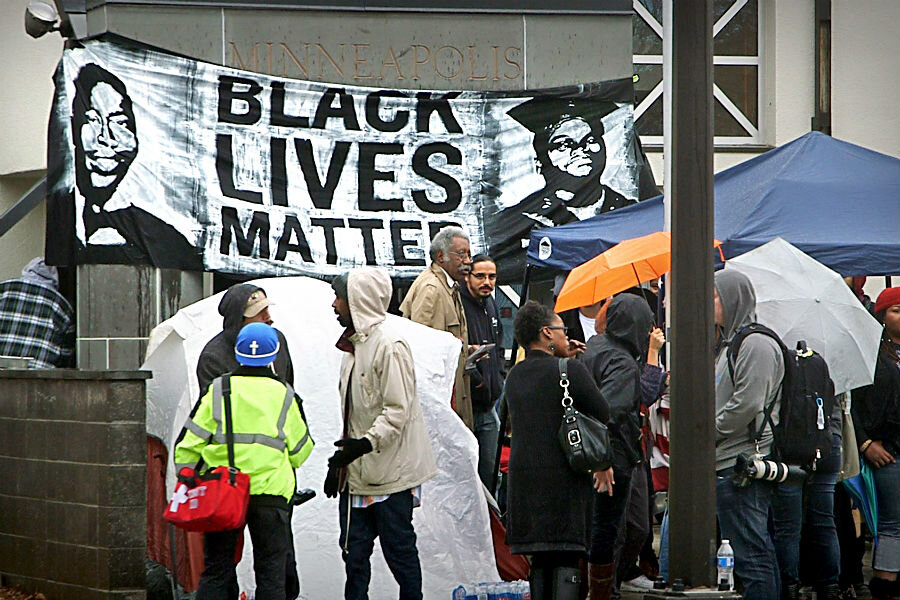Why Minneapolis protesters want police shooting video released
Loading...
Protesters camped out in front of a Minneapolis police precinct on Monday demanding the release of any police video footage that might show the shooting of Jamar Clark, a 24-year-old black man who they say was fatally shot by police while unarmed and handcuffed early Sunday morning.
Black Lives Matter Minneapolis said in its statement that the protesters won’t leave until video and the name of the officer are released, and Minneapolis Mayor Betsy Hodges secures an independent federal investigation.
The group’s requests are not unusual, and in fact, in a post-Ferguson era, police departments in some cities are trying a more proactive approach, including voluntarily releasing video when it supports their innocence, and even securing independent investigations of their own departments, to quell community anger and regain trust.
"When there's a video that backs up what they say, I think that's an enhancement of the public trust," Iowa City Police Chief Sam Harga told the Associated Press recently. Officers in his department have recently started wearing body cameras.
Quickly releasing video goes against a policing tradition to keep details of an investigation out of the public domain until there’s a trial. But some jurisdictions, such as Boston, are attempting to be more transparent with the American public, which has grown increasingly skeptical of law enforcement in the aftermath of numerous shootings of unarmed, black men.
In June, Boston's district attorney released a grainy video from a fast-food restaurant security camera the day after police shot terrorism suspect Usaama Rahim. Authorities said he had threatened retreating officers with a military-style knife before being fatally shot.
The footage, community leaders said a day later, contradicted the claim by Mr. Rahim’s brother that he was shot in the back while talking to his father on the phone.
"There’s certainly a movement among progressive police departments to be more transparent when it comes to many activities and certainly use of force," University of South Florida criminologist Lorie Fridell, who regularly conducts police trainings, told The Christian Science Monitor recently.
This spring, police in DeKalb County, Ga., handed an investigation into the shooting of an unarmed and naked black man by one of its officers to the state bureau of investigation to keep it independent and reliable.
In Minneapolis, police chief Janeé Harteau has not released video yet, saying in a press conference Sunday afternoon only that initial evidence shows that the Mr. Clark was not in handcuffs when he was shot for allegedly keeping the paramedics from treating a victim.
A neighbor posted her account on Facebook.
“There were literally dozens of witnesses looking from the apartments,” she wrote. “The crowd said that the police already had him down on the ground when they shot him. I heard a shot and got there within seconds. All the witnesses were yelling they shot the man while he was already down and handcuffed.”
Clark’s family member contends he was shot “in the head, execution style,” according to media reports.
Whether Minneapolis police decide to release video or hand the investigation over to federal law enforcement is not yet clear.
Protesters showed no signs of leaving. “We’re going to stay here until we find out what happened,” said community activist John Martin on Monday, according to Reuters.
"We are not here for show and tell. We are here for answers," he said.







